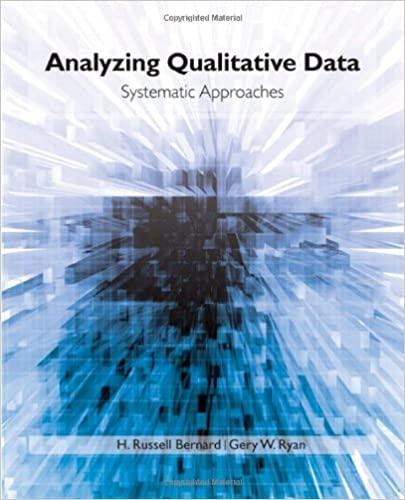Question
READ THE FOLLOWING POST AND THEN Ask questions for clarification, share an alternate viewpoint, offer suggestions or tips for improvement. Keep your responses respectful and
READ THE FOLLOWING POST AND THEN Ask questions for clarification, share an alternate viewpoint, offer suggestions or tips for improvement. Keep your responses respectful and professionaland include reference to at least one scholarly resource other than your textbook. (REFERENCES BELOW)
Upon a review of the body of evidence to support the use of NMT (Neurosequential Model of Therapeutics) in the foster care population, it was encouraging to find other programs that have had a similar focus. The first study that was identified provides support for the rationale supporting the intervention. This study examines a foster care population and highlights the importance of adherence to treatment in several different areas (Evans et al., 2023). Similar to the proposed program evaluation, this study also measures the adherence to NMT by clinicians. Using the constructs of sensory integration, self-regulation, relational, and cognitive functioning this study provides evidence that close adherence to NMT improves treatment outcomes in these areas. This study utilized interviews with clients or clinicians, assessments, treatment history, and current functioning to measure progress (Evans et al., 2023). With there being evidence to support improved outcomes in all these major areas with the specific target population, this study strongly supports the rationale for the program evaluation that is proposed. Furthermore, it makes suggestions for NMT treatment activities that can help improve adherence as well.
In another study that was identified, they share the same goal as the organization that is completing the program evaluation. In this study they attempt to change their program to utilize NMT as a guiding principle. By identifying NMT activities that meet the needs of children at different developmental levels and connecting the clients to them, this program was able to see positive change (de Nooyer et al., 2017). Research such as this may be helpful in identifying changes that could be made to increase the accessibility of NMT interventions for their clients. This article does not focus on foster children, but does focus on children that have been impacted by trauma. While these differences should be carefully considered, this research still provides possible solutions to some of the problems that may be faced in the evaluation that is being developed. If there are unanswered questions that cannot be located in any available research, they should be a key focus in the planning process if it is feasible.
References
de Nooyer, K. M., & Lingard, M. W. (2017). Applying principles of the neurosequential model of therapeutics across an adolescent day program and inpatient unit.Australasian Psychiatry : Bulletin of the Royal Australian and New Zealand College of Psychiatrists,25(2), 150-153.
Evans, K. E., Bender, A. E., Rolock, N., Hambrick, E. P., Bai, R., White, K., Diamant-Wilson, R., & Bailey, K. A. (2023). Exploring adherence to client treatment recommendations in the neurosequential model of therapeutics.Research on Social Work Practice.
Step by Step Solution
There are 3 Steps involved in it
Step: 1

Get Instant Access to Expert-Tailored Solutions
See step-by-step solutions with expert insights and AI powered tools for academic success
Step: 2

Step: 3

Ace Your Homework with AI
Get the answers you need in no time with our AI-driven, step-by-step assistance
Get Started


